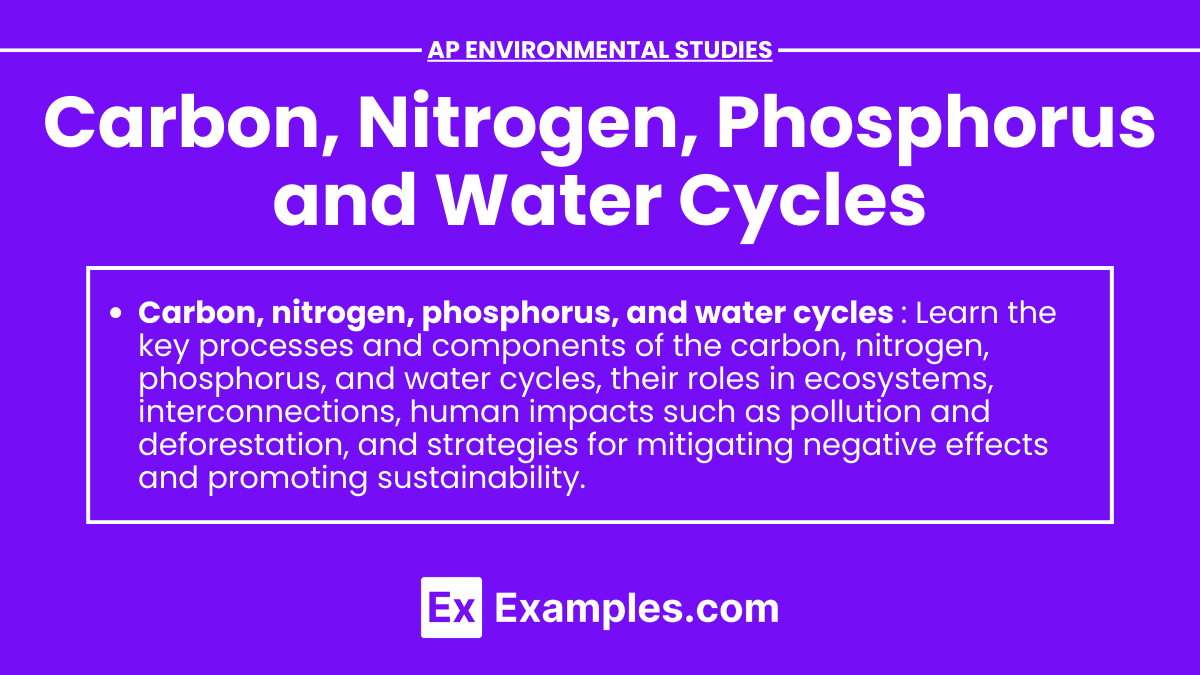The carbon, nitrogen, phosphorus, and water cycles are fundamental biogeochemical processes that circulate essential elements and compounds through the Earth’s biosphere, atmosphere, hydrosphere, and lithosphere. These cycles involve complex interactions between living organisms and their environment, facilitating the transfer and transformation of nutrients necessary for life. Understanding these cycles is crucial for comprehending ecosystem dynamics, the impact of human activities on natural processes, and the importance of sustainable practices to maintain ecological balance and health.
Learning Objectives
By studying the carbon, nitrogen, phosphorus, and water cycles, students should aim to understand the processes and components involved in the movement and transformation of these essential elements through different Earth systems. They should be able to identify the key stages of each cycle, recognize the interconnections between them, and analyze the impact of human activities such as deforestation, pollution, and climate change. Additionally, students should develop an awareness of the importance of these cycles in maintaining ecosystem health and explore sustainable practices to mitigate negative human impacts.
Carbon Cycle
Processes
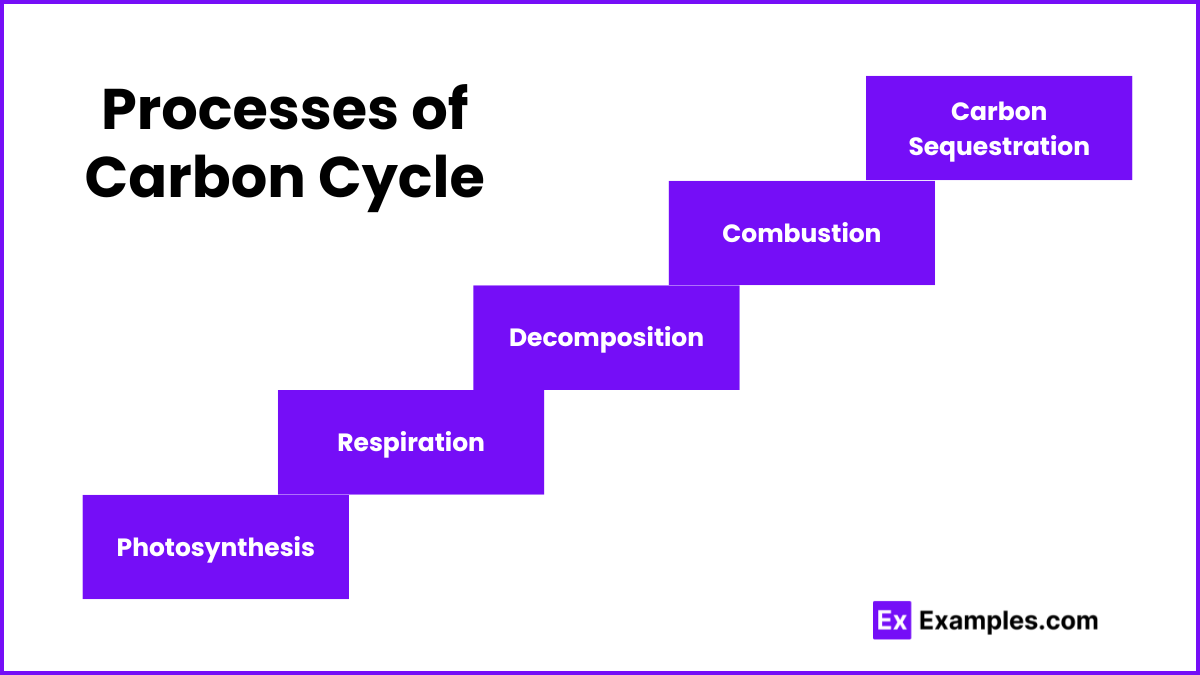
- Photosynthesis: Plants, algae, and cyanobacteria convert CO₂ into organic matter.
- Respiration: Organisms convert organic carbon back into CO₂.
- Decomposition: Decomposers break down dead matter, releasing CO₂.
- Combustion: Burning of fossil fuels and biomass releases CO₂.
- Carbon Sequestration: Long-term storage of carbon in soil, rocks, oceans, and vegetation.
Key Components
- Atmosphere: CO₂ gas.
- Biosphere: Organic carbon in living organisms.
- Hydrosphere: Dissolved CO₂, bicarbonate, and carbonate ions.
- Geosphere: Fossil fuels, sedimentary rock carbonates.
Human Impact
- Fossil Fuel Burning: Increases atmospheric CO₂, contributing to global warming.
- Deforestation: Reduces carbon sequestration by plants.
- Ocean Acidification: Increased CO₂ lowers pH of oceans, affecting marine life.
Nitrogen Cycle
Processes
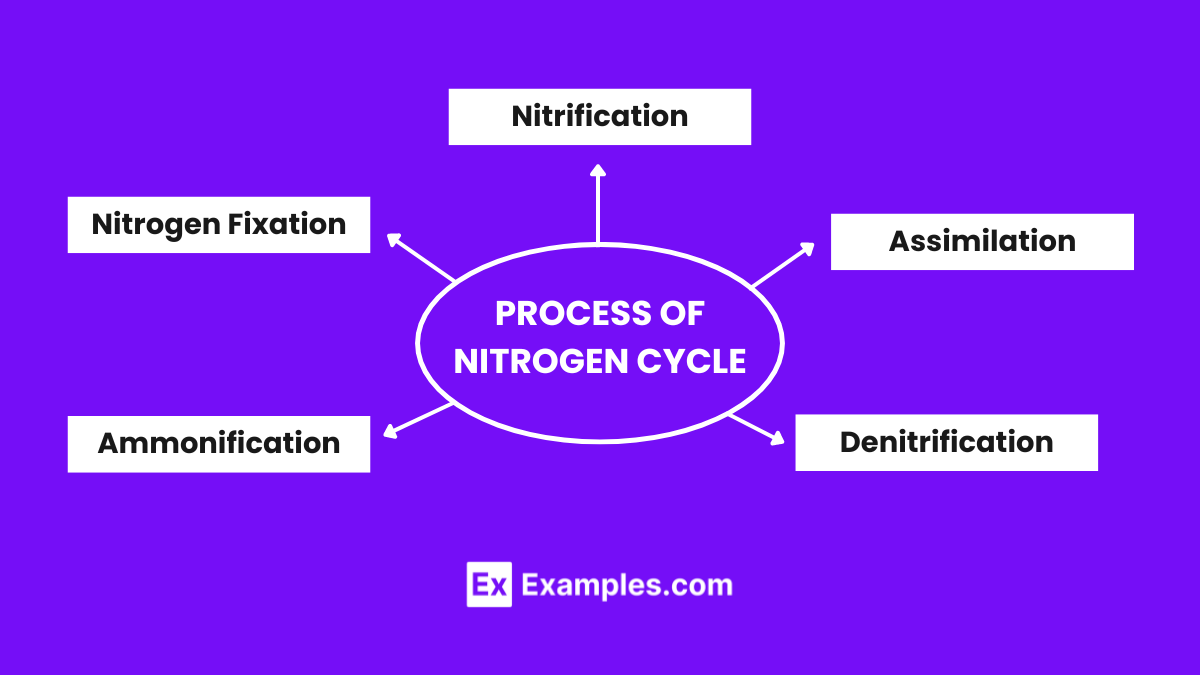
- Nitrogen Fixation: Conversion of N₂ to ammonia (NH₃) by nitrogen-fixing bacteria and industrial processes.
- Nitrification: Conversion of ammonia to nitrites (NO₂⁻) and then to nitrates (NO₃⁻) by nitrifying bacteria.
- Assimilation: Plants absorb ammonium (NH₄⁺) and nitrates (NO₃⁻) to synthesize organic molecules.
- Ammonification: Decomposition of organic matter to release ammonia.
- Denitrification: Conversion of nitrates back to N₂ gas by denitrifying bacteria.
Key Components
- Atmosphere: N₂ gas (major reservoir).
- Soil: Ammonium, nitrites, nitrates.
- Biosphere: Organic nitrogen in living organisms.
Human Impact
- Fertilizers: Excess nitrogen leads to eutrophication in aquatic systems.
- Burning Fossil Fuels: Releases nitrogen oxides (NOₓ), contributing to smog and acid rain.
Phosphorus Cycle
Processes
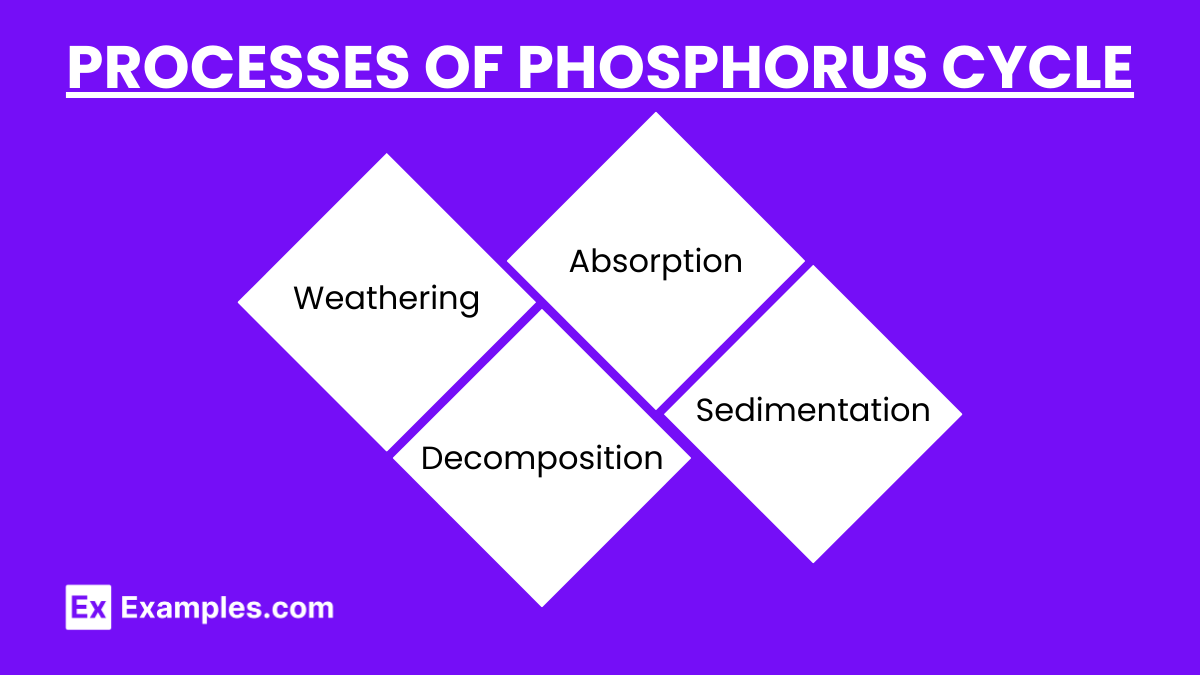
- Weathering: Release of phosphate ions (PO₄³⁻) from rocks.
- Absorption: Plants absorb phosphate from soil.
- Decomposition: Return of organic phosphorus to soil through decomposition.
- Sedimentation: Formation of new rocks from accumulated phosphorus in sediments.
Key Components
- Geosphere: Phosphate rocks (major reservoir).
- Biosphere: Organic phosphorus in living organisms.
- Hydrosphere: Dissolved phosphates in water bodies.
Human Impact
- Fertilizers and Detergents: Runoff causes eutrophication, leading to algal blooms and dead zones.
- Mining: Disrupts natural phosphorus deposits.
Water Cycle (Hydrological Cycle)
Processes
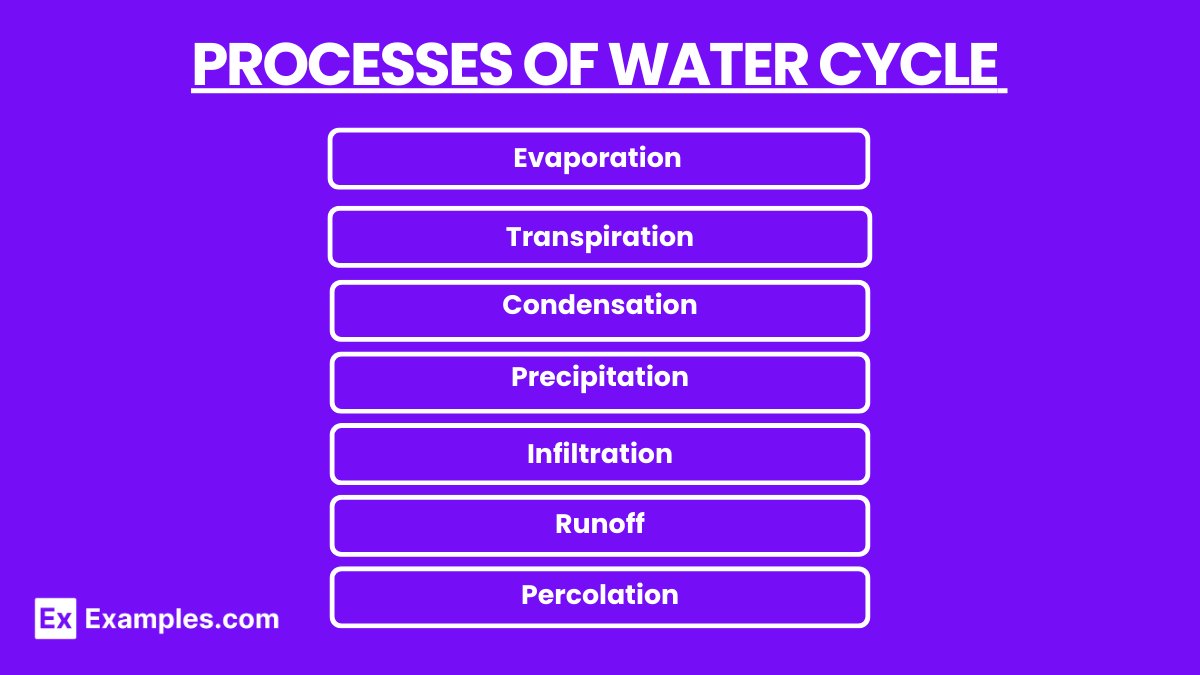
- Evaporation: Transformation of water from liquid to vapor.
- Transpiration: Release of water vapor from plants.
- Condensation: Formation of clouds from water vapor.
- Precipitation: Return of water to Earth’s surface as rain, snow, sleet, or hail.
- Infiltration: Movement of water into the soil.
- Runoff: Water flow over land into water bodies.
- Percolation: Movement of water through soil and rock layers.
Key Components
- Atmosphere: Water vapor and clouds.
- Hydrosphere: Oceans, lakes, rivers, groundwater.
- Lithosphere: Soil moisture, aquifers.
- Biosphere: Water within living organisms.
Human Impact
- Urbanization: Increases runoff and reduces infiltration, affecting groundwater recharge.
- Deforestation: Reduces transpiration and alters precipitation patterns.
- Climate Change: Alters evaporation rates, precipitation patterns, and the frequency of extreme weather events.
Interconnections Among Cycles
- Carbon-Nitrogen Interaction: Both cycles are linked through photosynthesis and decomposition.
- Nitrogen-Phosphorus Interaction: Fertilizers containing both elements contribute to eutrophication.
- Water Cycle Influence: Water is a medium for transporting nutrients in all other cycles.
Conservation and Management
- Sustainable Agriculture: Minimizing fertilizer use, crop rotation, and organic farming to reduce nutrient runoff.
- Afforestation/Reforestation: Planting trees to sequester carbon and restore natural cycles.
- Pollution Control: Reducing emissions and treating wastewater to mitigate human impact on these cycles.
- Climate Action: Reducing greenhouse gas emissions to mitigate climate change effects on biogeochemical cycles.

